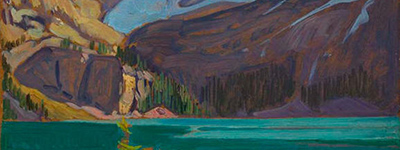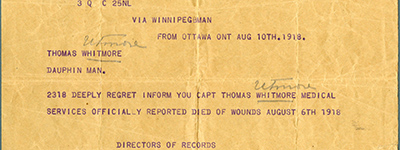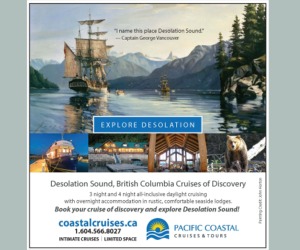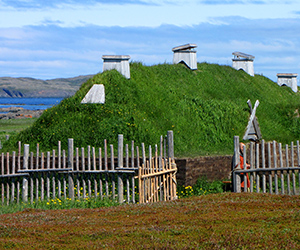CANADA HISTORY - Politics-Provinces
POLITICS - NWT
The history of the Northwest Territories stretches back thousands of years, long before the region became part of Canada. It is a history shaped by the land itself—an immense and rugged expanse of Arctic tundra, boreal forests, and vast waterways that have sustained human life since time immemorial. Indigenous peoples, including the Dene, Inuit, and Métis, are the original inhabitants of this region, and their presence on this land dates back over 5,000 years. The Dene, who lived in the forests and river valleys, and the Inuit, who thrived in the Arctic’s coastal regions, developed sophisticated cultures perfectly adapted to the harsh climate. The land was their sustenance, the caribou, fish, and sea mammals provided food, clothing, and tools, and their oral traditions, spiritual beliefs, and strong kinship ties bound them together as stewards of their environment.
European contact with the Northwest Territories came relatively late compared to southern Canada. It was the lure of the fur trade in the 18th century that first drew explorers, traders, and adventurers into the vast, uncharted interior of the North. The Hudson’s Bay Company (HBC), along with its rival, the North West Company, extended their trade routes deep into the Arctic and Subarctic regions, establishing trading posts along the Mackenzie River and Great Slave Lake. These trading posts, such as Fort Simpson and Fort Resolution, became vital hubs where Indigenous trappers exchanged pelts for European goods like metal tools, blankets, and firearms. The fur trade transformed Indigenous economies and societies, as the rhythm of hunting seasons became intertwined with the demands of European markets.
The search for the Northwest Passage, a mythical sea route linking the Atlantic and Pacific Oceans, was another driving force behind European exploration in the region. The Arctic’s forbidding geography and treacherous ice floes claimed the lives of many explorers, but men like Sir Alexander Mackenzie, who famously traversed the Mackenzie River to the Arctic Ocean in 1789, left an indelible mark on the region’s history. Mackenzie’s expedition demonstrated the vast potential of the northern interior, but it would be decades before the region was fully mapped and understood.
In 1870, the Northwest Territories officially became part of Canada when the Hudson’s Bay Company transferred Rupert’s Land and the North-Western Territory to the new Dominion. This vast region—encompassing present-day Alberta, Saskatchewan, Manitoba, Yukon, and parts of Nunavut—was administered by the federal government as part of its westward expansion strategy. The newly acquired territories were governed from afar, with little direct political representation for its inhabitants, most of whom were Indigenous peoples or Métis.
The political and social landscape of the Northwest Territories was forever altered by the signing of Treaties 8 and 11 in the late 19th and early 20th centuries. These treaties, negotiated between the Crown and Indigenous nations, were designed to facilitate European settlement and resource development in exchange for land rights, hunting and fishing privileges, and government support. For the Indigenous peoples, the treaties were often misunderstood, their promises poorly upheld by the Canadian government. The treaties opened the door for increased settlement and resource extraction, particularly in the southern regions, yet they also began a long and fraught relationship between Indigenous peoples and the Canadian state.
One of the defining events in the history of the Northwest Territories was the discovery of oil at Norman Wells in the 1920s. The Imperial Oil Company’s successful drilling operations in this remote region marked the beginning of the Northwest Territories’ transformation from a largely subsistence-based economy to one driven by resource extraction. Oil, gold, and other minerals were discovered in increasing quantities in the following decades, particularly in the Mackenzie Valley and the Yellowknife area. These discoveries led to an influx of prospectors, workers, and corporations eager to exploit the region’s rich natural resources. The discovery of diamonds in the 1990s further cemented the North’s role as a major player in Canada’s resource economy.
However, resource development in the Northwest Territories has always been a double-edged sword. While it brought jobs, infrastructure, and revenue to the region, it also brought environmental degradation and social upheaval. The construction of the Dempster Highway and the Mackenzie Valley pipeline project in the 1970s sparked intense debate over Indigenous land rights and environmental protection. The pipeline proposal, in particular, was met with fierce opposition from Indigenous leaders, most notably Dene leader Georges Erasmus, who argued that the project would devastate traditional hunting grounds and disrupt the delicate balance of the northern ecosystem. This opposition led to the landmark Berger Inquiry, headed by Justice Thomas Berger, which recommended a 10-year moratorium on pipeline construction until Indigenous land claims were settled. The inquiry was a watershed moment in Canadian history, bringing Indigenous voices to the forefront of national debates on resource development and setting a precedent for environmental and social impact assessments.
The political evolution of the Northwest Territories reached a turning point in 1967, when the territorial capital was moved from Ottawa to Yellowknife, signaling the beginning of greater local control over governance. The creation of a territorial council, and later a fully elected legislative assembly, allowed the people of the Northwest Territories to take more control over their political and economic destiny. The introduction of consensus government, a system that operates without political parties and is based on collective decision-making, reflects the region’s Indigenous traditions of governance. Leaders like Georges Erasmus, Nellie Cournoyea, and later, Paul Delorey, played crucial roles in shaping the political landscape of the Northwest Territories, advocating for Indigenous rights, environmental stewardship, and the economic development of the North.
Perhaps the most significant political development in the Northwest Territories’ history came in 1999, when the territory was divided to create the new territory of Nunavut. This division was the result of decades of negotiations between the Inuit of the eastern Arctic and the federal government, culminating in the Nunavut Land Claims Agreement. While Nunavut’s creation granted greater autonomy to the Inuit of the eastern Arctic, the remaining Northwest Territories continued to evolve as a political entity, with Indigenous self-government playing an increasingly central role. The Dehcho, Sahtu, and Tłı̨chǫ land claims agreements, signed in the early 21st century, granted significant powers of self-governance to Indigenous nations, further reshaping the political landscape of the Northwest Territories.
Today, the Northwest Territories stands as a region defined by both its vast natural resources and its deep Indigenous heritage. Its economy remains heavily reliant on mining, oil, and gas extraction, but tourism, government services, and traditional industries such as hunting, trapping, and fishing also play important roles. The environmental challenges posed by climate change are acutely felt in the North, where melting permafrost, shifting migration patterns, and changing weather conditions threaten both the natural environment and the livelihoods of its people. Indigenous leaders continue to advocate for sustainable development and environmental protection, recognizing that the land remains at the heart of their identity and culture.
The Northwest Territories is also a region of remarkable political diversity and collaboration. The consensus government model allows for a unique blend of Indigenous and Western governance traditions, where community voices carry significant weight, and decisions are made collectively. Leaders like Premier Caroline Cochrane have worked to address the pressing social and economic issues facing the territory, from housing shortages to the high cost of living, while also pushing for greater economic independence and resource management.
The history of the Northwest Territories is one of endurance, adaptation, and change. From the ancient Indigenous cultures that first settled its lands to the political struggles for autonomy and self-determination, the territory has navigated the complex interplay of tradition and modernity. Its leaders, whether Indigenous chiefs negotiating land claims or territorial premiers steering the region through economic challenges, have shaped a unique political and cultural landscape. The Northwest Territories remains a place where the past and the future converge, where ancient traditions inform modern governance, and where the vastness of the land is matched only by the resilience of its people.
ChatGPnment












